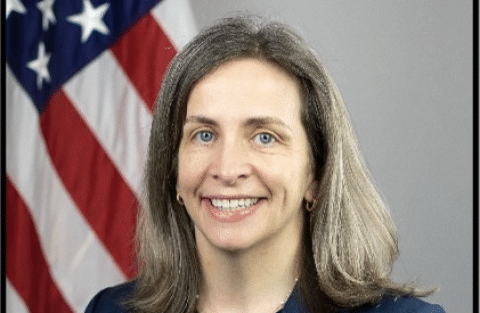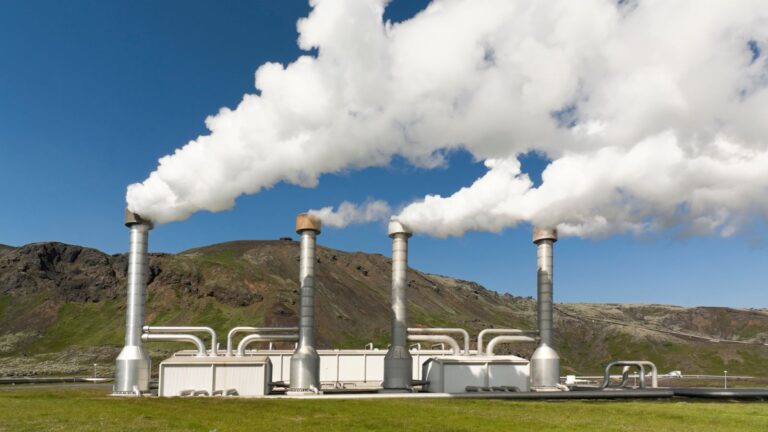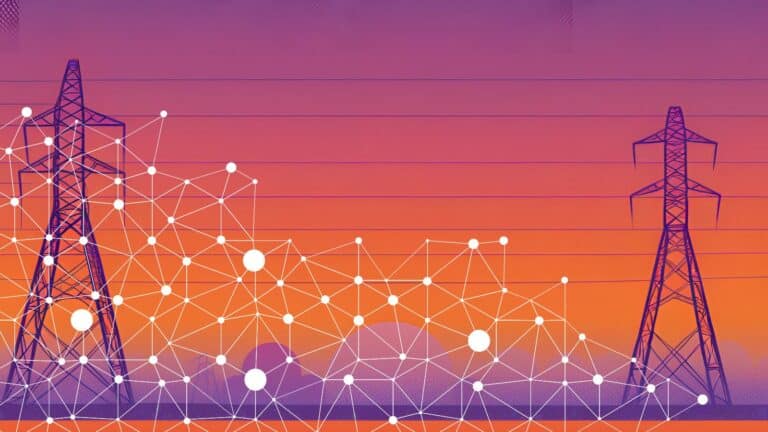This event summary reflects the authors’ understanding of key points made in the course of the discussion. It does not necessarily represent the views of the Center on Global Energy Policy. The summary may be subject to further revision.
This work was made possible by support from the Center on Global Energy Policy with funding from the Hewlett Foundation. Contributions to SIPA for the benefit of CGEP are general use gifts, which gives the Center discretion in how it allocates these funds. More information is available on our Partners page. Rare cases of sponsored projects are clearly indicated.
Special thanks to Jeffrey Chen for organizing this workshop and to Mei Butler, Jeffrey Chen, and Arjuna Dibley for their help in preparing this report.
Abstract
On February 27, 2020, the Columbia University Center on Global Energy Policy (CGEP) convened a workshop at the university’s Faculty House in New York City. The workshop brought together a combination of practitioners, researchers, executives, and public sector officials to discuss the role of state-owned enterprises (SOEs) in realizing collective climate action goals. Under the Chatham House Rule, the discussion focused around sectors (power generation, oil and gas) and relationships (government-SOE relations, and the role of public financial institutions), before concluding with a roundtable discussion drawing together the day’s proceedings and outlining the next steps. The following is a summary of that workshop.
Introduction
State-owned enterprises across the globe emit over six gigatons of CO2 each year, a significant portion of the world’s total greenhouse gases, and more than any country except China. Despite their contribution to global emissions and their important functions in directing financial flows and delivering services in some of the world’s largest economies, there has been limited discussion of the role SOEs will need to play in advancing climate change action.
Across Asia, Africa, and Latin America, SOEs dominate key sectors of national economies, particularly energy. SOEs have a critical role to play in reducing emissions, directing funding toward low-carbon alternatives, and bolstering resilience efforts. Depending on the country, SOEs can be well-positioned to drive climate action across power, oil and gas, industry, and urban transit. State-controlled national and multilateral financial institutions are also often key funders of high- and low-carbon projects. SOE actions in shaping and implementing climate policies and programs will have major implications for the efficacy of the global response. Understanding the drivers of SOEs’ behavior—economic and non-economic—is therefore essential. Bringing SOEs on board requires assessing the extent to which their incentives are or can be aligned with low- and zero-emissions technologies and reshaping them accordingly.[1]
Researchers in this area face a formidable analytical challenge. SOEs often differ significantly depending on the sector and the country; they also differ from their private-sector counterparts. Government policy on climate change also varies. SOEs operate in countries where climate change is high on the political agenda and in many others where it is not. They often can exert significant influence on issues affecting their areas of activity, at times overriding the preferences of governmental agencies overseeing them. The task facing policymakers and researchers is to identify and understand SOEs’ specificities and use these findings to support SOEs and their shareholder governments in achieving climate-compatible outcomes at the speed and scale required.
Understanding SOEs and Climate
SOEs are typically motivated by more than profit maximization alone. While some SOEs are profitable, many are loss-making, generating contingent liabilities for government shareholder(s). SOEs in strategic sectors frequently are not allowed to fail, as that would involve interrupting vital services, which in turn would present political risks for the government from dissatisfied households, businesses, and other consumers.
Workshop participants suggested that climate change presents an opportunity for SOEs to improve cost-competitiveness, using low-carbon investments to address business risks, drive cultural change, and lead to greater resilience to climate-related risks. There was recognition of complementarities between climate alignment and sustainable growth, development, and deployment of scalable new technologies for diffusion across other companies in the sector (e.g., production of ammonia from existing industrial processes), and incorporation of climate risk and capacity building into corporate planning.
Participants agreed that clear targets and mandates, along with strong leaders, unambiguous regulatory constructs, and opportunities for cross-industry collaboration, can be useful in guiding SOEs toward more sustainable behavior. Others questioned the applicability of carbon pricing mechanisms (such as carbon taxes) to SOEs, given that carbon taxation is primarily conceived and implemented as a private sector–oriented framework. Participants felt that a level playing field is an essential precondition for effective carbon pricing, such that SOEs and private enterprises are equal market participants with neither group enjoying a systematic advantage. Some countered, asking whether SOEs, even those with relative financial discipline, are sufficiently driven by profit maximization goals to make these pricing tools effective.
The consensus was that most SOEs are not pure profit maximizers. They typically serve a range of interest groups (including their employees) and objectives (for example, various social and political mandates of the government shareholder). Indeed, SOE executives are often evaluated not just on profit or sustainability performance (e.g., emissions reductions) but other metrics including capital deployment, efficiency, employment statistics, and delivery of key services (such as electricity). Further, governments seeking SOEs’ support in political coalitions may be unwilling to enact low-carbon measures that would be unpopular with the SOEs, such as imposing climate-related costs on SOE operations.
Although larger countries are often the focus of climate discussions, SOEs are also considerable emitters in countries with relatively small absolute footprints. The Nigerian National Petroleum Corporation is the 25th-largest emitter globally. It also loses an estimated USD 1.5 billion annually through flaring—enough to fund Nigeria’s education, power, and health ministries. This illustrative case underlines how improving SOEs’ operational and climate performance can yield multiple developmental benefits.
Workshop attendees proposed five conditions for successful SOE engagement in energy reform. First, alignment between energy and climate objectives, such that safeguarding energy security and pursuit of cost-effectiveness, is compatible with clean energy development. Second, a clear legislative framework for the economic activities of SOEs. Third, credible political signaling supporting climate-compatible energy development. Fourth, sufficient technical and operational capacities within SOEs and their overseeing ministries to design and implement policies and programs to support the deployment of low-carbon technologies (e.g., integrating intermittent renewables into the grid). Fifth, supportive internal management willing to lead the SOE in low-carbon action.
State Power Companies
Power sector SOEs are often responsible for a disproportionately large share of emissions in the countries in which they feature prominently. The role of power SOEs varies substantially across countries: some are cast as pivotal players in power sector development, tasked with ensuring the security of electricity supplies above all else; others operate narrowly within highly regulated markets for fuel and electricity; and still others are expected to compete directly with the private sector in domestic and/or international markets. In some cases, power SOEs have also taken a leading role in deploying electric vehicle (EV) charging infrastructure and mass transit electrification.
Several participants suggested that rising power demand and market design constraints in many developing countries make sectoral decarbonization challenging. Market-based schemes for carbon emissions trading exist in some markets but have not yet resulted in fundamental change.
Rising SOE investment in new solar and wind capacity (and in some cases hydropower) has not yet been accompanied by a decline in coal power investment or clear commitments to phasing out existing coal capacity. SOEs have focused on developing and deploying advanced coal-based technologies (such as ultra-supercritical plants), as well as installing pollution control technologies and mechanisms, but there has been very little investment in carbon capture and other CO2 emissions reduction technologies.
Workshop participants generally agreed that the economics of renewable energy and battery storage are rapidly improving relative to coal, with future investment trends expected to be dictated by project-level economics at least as much as by regulation of thermal power plants. Examples of renewable energy (with storage) contracts priced beneath the cost of new coal generation already exist. Participants agreed that these results, implying around-the-clock, price-competitive clean energy, are potential game-changers.
Domestic competition was acknowledged as a critical component of reform, while international competition was considered less important for the power sector since most generation is local. Moreover, while competition in generation markets is generally straightforward (requiring market access for independent power producers), it is more difficult in transmission and distribution markets because of their natural monopoly attributes.
Participants debated the role of power sector SOEs in EV charging infrastructure development. They differed over whether infrastructure costs, including opportunity costs (e.g., using parking spaces for charging), should be socialized or recovered through more targeted pricing. The latter choice could result in electricity prices in excess of the gasoline equivalent, becoming self-defeating. Others cited public-private partnerships as an appropriate early-stage business model, with the charger costs met by billing site hosts (shopping malls, supermarkets, etc.) and the transmission costs assumed by the SOE, or alternatively, free charging for consumers in exchange for lower tariffs charged to the business. As the market matures, further public investment would be recovered through tariffs.
In many cases, renewable and storage solutions are now virtually competitive with new fossil capacity; intermittency still poses challenges but is generally considered an outdated, or at least manageable, concern. Attendees suggested that an important outstanding challenge for power SOEs relates to the scale of their investments. For example, these SOEs may face difficulties accessing sufficient land for large-scale renewable development or obtaining access to transmission capacity from a new and often remote site (which may require the construction of a transmission line). With new coal no longer competitive in many circumstances, those power SOEs that are open to market pressure should be more likely to shift to lower-carbon alternatives, while those that are more insulated or inflexible are more likely to resist change. While government decisions matter for power SOEs, participants thought the commercial context in which they operate is of similar importance. SOE leadership on climate is more likely to succeed if it benefits from a government able to provide effective direction, with the rigors imposed by market discipline providing an additional pole of support.
National Oil Companies
National oil companies (NOCs) play an important role in carbon-intensive supply chains, even where they are not the primary emitters. While much media focus remains on international oil companies, NOCs are responsible for over half of oil production and reserves, with an emphasis on generating government revenues, which sets them apart from their private-sector counterparts.
NOC approaches to reducing their emissions and managing climate risks vary widely. Efforts to address climate change by the largest NOCs have focused on operational improvements (such as reductions in flaring and venting, energy and water efficiency, enhanced oil recovery, and carbon capture and sequestration), but emissions per barrel of oil produced vary significantly. Overall, NOC behavior suggests that governments are continuing to prioritize generating revenues for their budgets and favoring the perceived energy security benefits from domestic production over climate goals. Efforts to implement long-term reforms can be vulnerable to political change, and sustained public pressure to guard against backsliding is not present in most countries.
The seeming threat that climate reforms pose to the important revenue streams and access to “cheap” domestic energy provided by NOCs is hindering progress in addressing NOC emissions. While growing numbers of governments view emissions mitigation policy as important, it is still generally secondary to the traditional functions of NOCs: revenue, employment generation, and security of supply.
Workshop attendees cautioned that differences in NOC structure, historical context, and political circumstances mean that general rules governing their behavior are hard to identify if they do exist. Nevertheless, hope was expressed that NOCs can play a leading role in the oil and gas transition.
How to go about preparing NOCs for the low-carbon transition will vary by country. The terms and dynamics of social contracts between NOCs, national and subnational governments, and the general public differ greatly by country and are subject to change. The industry will also increasingly have to confront and address methane leaks as awareness of their impact on temperature grows and the increasing availability of remote sensing makes them easier to detect.[2] NOCs are also increasingly facing pressure to reduce their carbon footprints from other countries where they conduct exploration, development and sales activities.
Government-SOE Relations
SOEs hold critical roles in many national economies, ranging from delivering essential energy and communications services to strengthening national security. They have become pivotal sources of power and influence in many countries. Moreover, SOEs are active in multiple industries in many countries, including electricity, finance, mining, oil and gas, telecommunications, transport, and manufacturing.
Although SOEs are generally perceived to be less operationally efficient than their private-sector peers, governments can still use them as effective vehicles for achieving climate objectives. Most obviously, governments can use their influence as the sole or primary shareholder to encourage their SOEs to advance low-carbon investments and other activities. In many emerging economies, SOEs and public financial institutions are almost always key vehicles for policy implementation and represent a potential tool to advance national climate goals.
From a research perspective, the key questions are how, and to what extent, governments can guide SOE responses to climate goals, which in turn requires an understanding of the government-SOE relationship and SOEs’ operating environment. In some cases, the directors of important SOEs can have more leverage over government decision-making than elected officials, with the capacity to override decisions up to and including at the ministerial level.
Reforms in governance, accountability, and market/commercial conditions (e.g., through subsidy reform) can reduce SOEs’ propensity to demand and receive special treatment versus their private counterparts. Clearer, narrower objectives linked more closely to economic efficiency can limit SOEs’ ability to influence political decisions to protect their operations and can assist governments in holding them to account.
The discussion also turned to subsidies and the extent to which they distort SOE behavior. Participants agreed that subsidies for fossil fuel energy prices and oil production, for example, remain an issue for decarbonization by both private and state-owned firms. For SOEs, the obligation to provide services at subsidized prices to consumers, often below cost, can be a heavy financial burden giving rise to chronic structural issues and undermining their financial position and their ability to invest in new technologies. The removal of subsidies was acknowledged to be a highly politically charged issue.
Some participants noted the importance of transparency on the amount and allocation of subsidies, suggesting that explicit subsidies to consumer groups are preferable to implicit subsidies to industry, with a similar effect on overall welfare and a much more discernable effect on demand. Some suggested that augmenting the profit motivation of SOEs, particularly when margins are partly determined by carbon pricing or other market mechanisms, would allow for more efficient management of externalities and greater ability to respond to market demand for green products and services.
It was noted that while SOE senior executives can, and often do, have too much influence over policymaking affecting their operations, the reverse can be true, where an SOE is subject to excessive political influence. This was acknowledged as a complex issue determined by many factors, including the strength of the rule of law and the separation of decision-making powers between SOE executives and government officials. One suggested model, currently in use in Latin America, comprises an independent supervisory body charged with surveilling the conduct of SOEs in all sectors transparently.
SOEs face significant climate risks, particularly from the effects of acute and chronic damage to critical infrastructure that they rely upon to operate (e.g., water, sewage, transmission systems, ports). Consequently, global climate change mitigation action can support SOEs’ operational viability over the long term. SOEs, as key economic actors with the theoretical ability to collect and manage vast amounts of data, can also help to improve climate risk modeling. Given that climate risks are expected to materialize over decades, SOEs could play a role in resolving the “tragedy of the horizon” beyond the shorter forecasting models of private-sector peers. SOEs can also lead by example in the issuance of sustainable bonds—with coupon rates contingent on emissions or resilience outcomes—and disclosure of climate risks in financial statements.
Important Role for Public Financial Institutions
Participants discussed the role of development finance in supporting SOEs’ clean energy efforts. It was suggested that private investors should fill gaps in infrastructure development, backed by environmental policies and underwriting products from dedicated public sector agencies designed to promote clean energy investment.
Public financial institutions increasingly include climate benefits and costs in analyses for operations and investments. Multilateral development banks (MDBs) are focusing more on lending to local intermediaries to transform markets for green products and services and are scaling up new business models capable of addressing barriers to entry. Greater MDB involvement in raising finance for green projects can help investment managers in state-owned banks assess and price projects objectively, thereby facilitating much-needed access to debt markets for green project developers.
Public financial institutions’ shareholders play a critical role. The influence of shareholding governments over multilateral bank policies can be significant, particularly when investing alongside national institutions. Under President Barack Obama, the United States pressured MDBs to restrict coal lending; while various countries resisted this proposal, which was seen as an attempt to dictate domestic energy policies, it did lead to restrictions on the conditions under which finance could be provided overall. Participants noted that while many of these proposals and discussions around limiting international finance for carbon-intensive foreign investments were already underway, the political environment induced by the Paris Agreement and the United States’ then-favorable position on climate accelerated the pace of reform. Others noted that while public financial institutions provide essential capital, they are tied to mandates and policies for which climate remains a co-benefit of wider development objectives; they are not simply asset managers for the general public.
Some participants argued that for climate finance commitments to be self-sustaining, MDBs should play a greater role in ensuring a continuous influx of new projects. The cashflows and refinancing of these projects can help recycle money into newer projects and build a track record of successful deals. To date, private equity has made the largest private-sector contribution for most such projects; the perceived risks remain too high to attract institutional investors, particularly in emerging markets. MDB contributions should address these investors’ risk-return requirements and bring warehousing projects to scale to enable institutional investors to take their development forward. Some participants felt that “green investment banks” provided a useful business model.
Where Do We Go from Here: How Can SOEs Be Enabled and Encouraged to Engage in Climate Action?
SOEs around the world were generally created to provide key services to the public at affordable prices or to exploit and market natural resources for the public benefit. The closeness of SOEs to governments may increase their ability to implement policy rapidly, but this can limit their ability to remain competitive and blur the distinction between government control and patrimonialism. Participants noted that SOEs’ value is not just economic, however—they have a multifaceted social mission that can often be overlooked in policy debates. The ethical dimension of the climate transition receives relatively little attention yet is central to arriving at a collective vision for prosperity and justice in a post-carbon world.
Participants also acknowledged that climate goals compete with multiple other priorities, including short-term growth objectives in countries that currently rely heavily on fossil fuels. Participants agreed that compelling all SOEs in a given country to meet national emissions targets uniformly would not be an intelligent or efficient approach and that emissions should be allocated differently—for example, depending on each SOE’s role in promoting further economic growth and social improvement. Some challenged the use of emissions as an appropriate way to measure the degree of SOE engagement in climate action, suggesting that SOEs should instead be assessed in terms of their contribution to the capital investments needed to achieve a net-zero economy, even (or perhaps especially) if these capital investments deliver lower returns than those required by the private sector. Assessing the best route is difficult, particularly when resilience is also being considered.
Participants noted that many of today’s SOEs began as private companies that were later nationalized, implicitly raising social development above other considerations, including financial viability in some cases. Financial viability can be secondary to the ability to provide critical services. While a solvent utility is preferable to a bankrupt one, the provision of essential services like electricity, water, and gas is generally considered more important in the short term, in some cases leading to chronic dependence on ongoing government support. In contrast, for many NOCs, profitability and financial viability are necessary to compete in regional or global markets.
Some viewed SOEs’ lack of responsiveness to economic change as due to a lack of clear alternative pathways and the need to identify how the low-carbon transition can serve both corporate and government-level goals. This is particularly true for SOEs facing massive challenges in the transition away from fossil fuels. Moreover, while emissions reductions are an important component of the transition, myriad other factors must be considered in making such a transition successful, SOEs’ role in building resilience to the impacts of climate change is often neglected, for instance.
Governance was identified as a key ingredient of success for SOE reforms. China’s Thousand Enterprise program was cited as a successful example of establishing a system of management, committees, audits, and technology adoption practices to drive and monitor change. Among others, the experiences of Latin American SOEs in overcoming internal resistance to newly developed technologies and scaling them up demonstrate the importance of capacity building and modernization efforts and the support of key ministries. It was suggested that SOEs’ boards of directors should be assigned formal responsibility for measuring emissions, committing to emissions reductions plans, and managing climate-related risks.
The workshop proceedings highlight debate about which mechanisms can most effectively motivate SOEs to support climate action, what these enterprises need to fully embrace clean energy and technology, and whether they can and should be willing to take some of the risks associated with doing so. It was suggested that the metrics for SOEs’ service delivery mission and distributional impacts during an energy transition, and the terms of their social contracts with the general public (the ultimate shareholder sitting behind the government), should be revisited, drawing lessons from the private sector as appropriate. Better designed metrics that capture the multiple objectives of SOEs can help address perceptions that they are inefficient and poorly managed, well-founded or not.
In parallel, political momentum for reform and reorientation is needed. Future research should examine the conditions for successful government leadership in supporting SOEs through the transition, potentially including budgetary levers, carbon pricing impact (or lack thereof), and using data to improve visibility of the consequences of the transition on SOEs’ operations and structure. A new language may be needed to describe and interpret the impact of market conditions, sectoral changes, alternative governance models, budgetary alignment, and tax policy on SOEs.
Notes
[1] For additional insights on how best to engage SOEs in efforts to lower greenhouse gas emissions, see Philippe Benoit, “Engaging State-Owned Enterprises in Climate Action,” Center on Global Energy Policy, September 2019, https://www.energypolicy.columbia.edu/research/report/engaging-state-owned-enterprises-climate-action.
[2] Further discussion on the future of methane detection can be found in Jonathan Elkind et al., “Nowhere to Hide: Implications for Policy, Industry, and Finance of Satellite-Based Methane Detection,” Center on Global Energy Policy, October 2020, https://www.energypolicy.columbia.edu/research/commentary/nowhere-hide-implications-policy-industry-and-finance-satellite-based-methane-detection.





